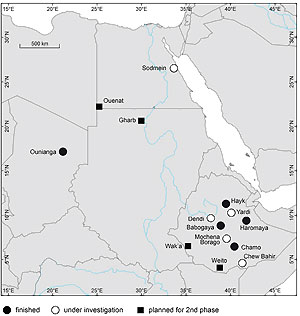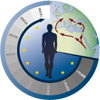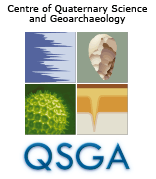 Northeast Africa - Ways of Dispersal from the Centre of Origin
Northeast Africa - Ways of Dispersal from the Centre of Origin
| Initial investigation areas: Ethiopia, Egypt, Sudan |
Speaker: Prof. Dr. Jürgen Richter |
[accordion]
[accordion_item title='Information']
East Africa is probably the region of origin of modern humans with Ethiopia yielding the most ancient fossils of Homo sapiens. Cluster A research teams aim at
- reconstruction of the archaeological and environmental background of the Late Pleistocene in Northeast Africa;
- an evaluation of the "Northern Dispersal Route" hypothesis of human dispersal;
- a comparison of cultural sequences in two different environments (Southwest Ethiopia and Eastern Egypt);
- the reconstruction of Late Pleistocene climate changes.
In the preceding project period archaeological excavations in two rockshelters were undertaken (A1). At Mochena Borago in Ethiopia excavations reached MSA (Middle Stone Age) levels from the 50-40 ka time slice with previously unknown microlithic stone industries; at Sodmein Cave in Egypt investigations have reached layers assigned to the last interglacial (at 120 ka). Both these field projects will be continued in the forthcoming project phase. Exhaustive surveys of the site catchments will be kept up to integrate both sites into geo-archaeological and environmental reconstructions of the prehistoric landscape at the time of human occupation.
[/accordion_item]
[accordion_item title='Read more ...']
 Meanwhile, a whole series of lacustrine archives (Chew Bahir, Chamo, Babogaya, Dendi, Hayk, Yardi, Haromaya) was checked for their potential to reconstruct the regional climate and environment of the Late Pleistocene (A3). Scientific drilling at Lake Chew Bahir (Konso/Southern Ethiopia) so far provided the most promising results (with a sediment sequence covering at least the last 200 000 years). Work at Lake Chew Bahir will be continued under the auspices of the International Continental Scientific Drilling Program (ICDP). Chew Bahir will deliver environmental data which will illustrate the environmental situation in the southern Ethiopian province near the fossil sites in the FejFej and Omo/Turkana region. The Chew Bahir project serves as a test case for future drilling operations which will be initialized by CRC 806 teams in the coming research phase. Preliminary data from this lake have already been published. Archaeological surveys will be continued west of Chew Bahir, in the Weyto area, where new MSA sites have been located (A1). As a highland case study, the Dendi Caldera lake has also been cored (to be continued in the next research phase). The same caldera, at an elevation of almost 3000 m, has yielded abundant archaeological sites with assemblages attributed to the Acheulean, MSA and LSA, including an obsidian raw material source. The Dendi case study has the potential to combine the CRC´s triple research foci on culture, geomorphology and environmental history of a well-defined micro-region at very high elevation (A1, A3). Complementing the southern Ethiopian case studies cluster A activities will also touch the Afar province of Modern Human origin marked by the Herto fossil finds. Close to the site, Lake Yardi is expected to provide environmental data from the time span. Coring operations will commence in the coming CRC project phase.
Meanwhile, a whole series of lacustrine archives (Chew Bahir, Chamo, Babogaya, Dendi, Hayk, Yardi, Haromaya) was checked for their potential to reconstruct the regional climate and environment of the Late Pleistocene (A3). Scientific drilling at Lake Chew Bahir (Konso/Southern Ethiopia) so far provided the most promising results (with a sediment sequence covering at least the last 200 000 years). Work at Lake Chew Bahir will be continued under the auspices of the International Continental Scientific Drilling Program (ICDP). Chew Bahir will deliver environmental data which will illustrate the environmental situation in the southern Ethiopian province near the fossil sites in the FejFej and Omo/Turkana region. The Chew Bahir project serves as a test case for future drilling operations which will be initialized by CRC 806 teams in the coming research phase. Preliminary data from this lake have already been published. Archaeological surveys will be continued west of Chew Bahir, in the Weyto area, where new MSA sites have been located (A1). As a highland case study, the Dendi Caldera lake has also been cored (to be continued in the next research phase). The same caldera, at an elevation of almost 3000 m, has yielded abundant archaeological sites with assemblages attributed to the Acheulean, MSA and LSA, including an obsidian raw material source. The Dendi case study has the potential to combine the CRC´s triple research foci on culture, geomorphology and environmental history of a well-defined micro-region at very high elevation (A1, A3). Complementing the southern Ethiopian case studies cluster A activities will also touch the Afar province of Modern Human origin marked by the Herto fossil finds. Close to the site, Lake Yardi is expected to provide environmental data from the time span. Coring operations will commence in the coming CRC project phase.
Research in northern Chad (A2) has been terminated. The project retrieved and examined the full sediment record of Lake Yoa, which covers the entire Holocene and represents the Sahara's best resolved and most complete lacustrine archive. During the next funding period the A2 team will focus on late Pleistocene deposits on Jebel Ouenat in northwestern Sudan and in the central and western parts of the Sahara.
Excavations and coring will supply cultural and environmental data for southern Ethiopia, the West Ethiopian Highland and the Afar Region. During the coming research phase archaeological and geomorphological data will arise from the Eastern Desert of Egypt, while geological fieldwork in new localities of the Sahara will provide new late Pleistocene palaeoclimate proxies.
Cluster A projects have also proved positive in other (non-sientific) respects: In 2012 the desert lakes in the Ounianga region were declared the country's first UNESCO World Heritage Site, and the Ethiopian CRC teams contributed to a UNESCO proposal for the establishment of the new National Museum of Human Origins in Addis Ababa.
[/accordion_item]
[/accordion]










